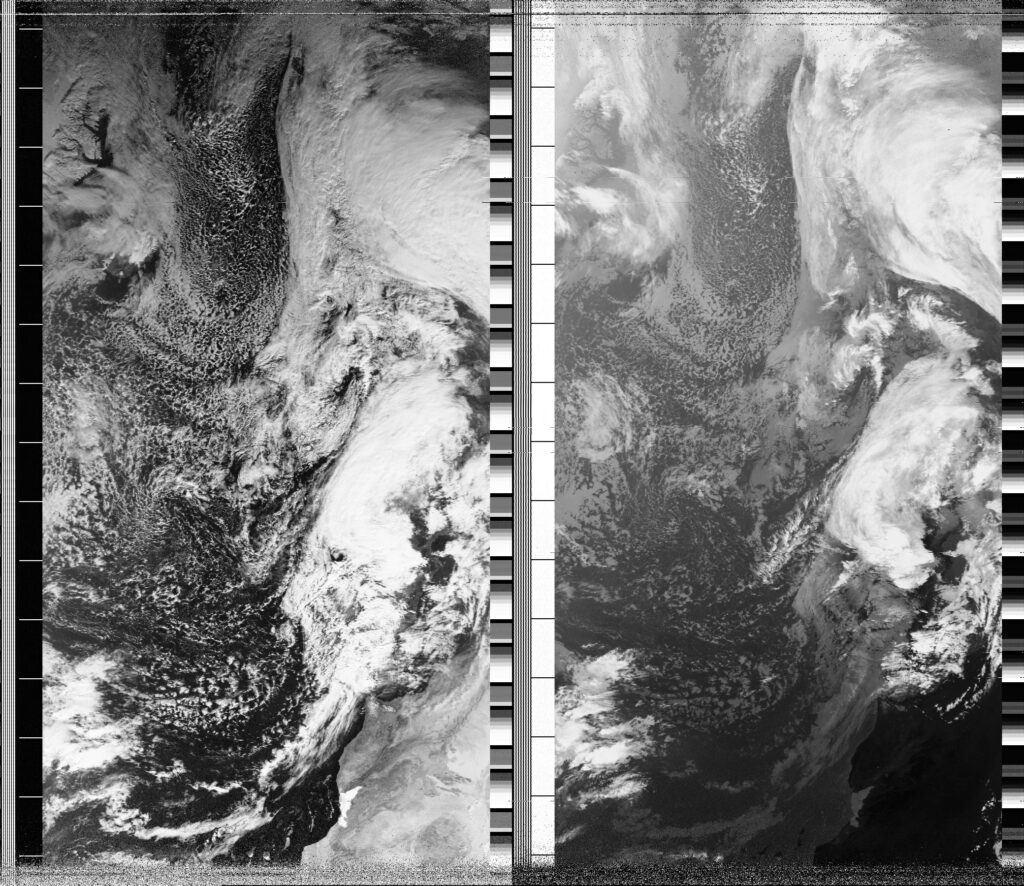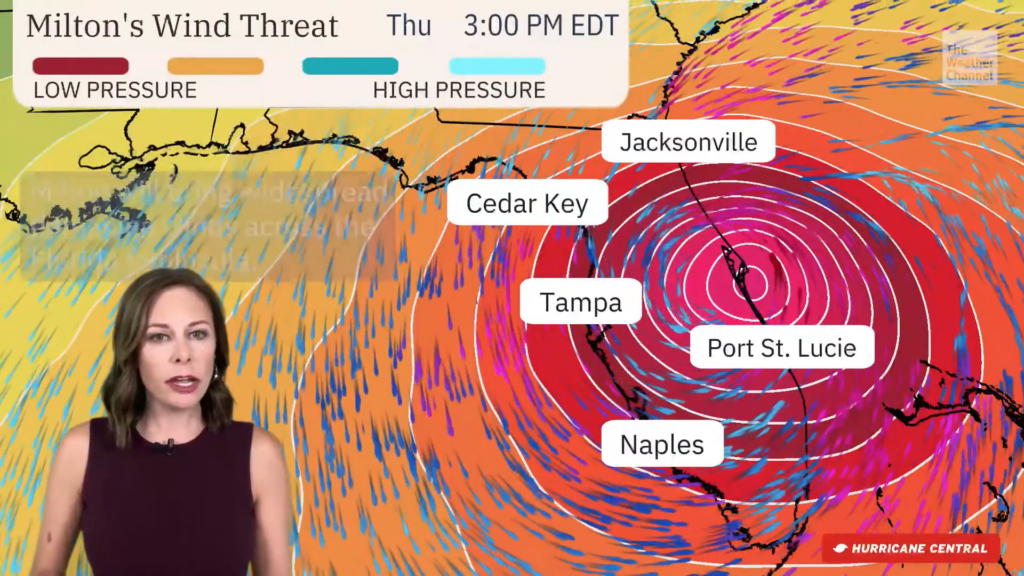Local Date
9 October 2024Local Time
12:50Location
Hackney Downs, LondonCountry or Territory
United KingdomContributor
Sasha EngelmannSatellite
NOAA-18Radio Callsign
Archive ID
Coordinates
"Even though it looks beautiful, this is very bad, this will cause a lot of damage" says a forecaster of Hurricane Milton in one of many livestreamed weather reports I consult throughout the day. He repeats this phrase several times, as if he has to convince himself that it is true. Yet he still calls Milton 'healthy' as he describes its current trajectory and form. I learn that Milton has an 'eye' or 'core' that is among the smallest ever recorded - only about 4 miles across - and this is one of the reasons its effects could be so devastating. Another forecaster uses the metaphor of an ice skater doing a spin and hugging their arms closer to their body, therefore spinning faster. A very different set of affects was offered by John Morales, a Puerto-Rico raised, Florida-based meteorologist and weather forecaster for 30+ years, who became emotional on live television yesterday while describing the fact that the pressure in Hurricane Milton had dropped 50 millibars in ten hours. Morales takes a deep, shaky breath and continues 'this is just horrific'. The video circulates widely on social media. As the hurricane moves north, its proximity to the jet stream will cause wind shear, and some of its 'arms' will 'tear to shreds' according to another newscaster. The storm will likely downgrade to a level 3 hurricane by the time it meets land. But this does not mean it will be weaker or cause less damage, as the weaker storm-system will become wider, potentially affecting much more of Florida. The jet stream will not remove enough 'arms' to reduce the storm's strength. The site of landfall remains uncertain, with some forecasts suggesting the beach of Tampa, where the consequences in terms of storm surge and infrastructure would be catastrophic, while others suggesting it may land further south. It is both fascinating and terrifying that less than twelve hours away from 'landing', the landing-site is still unknown. To follow Milton in all of these ways is thus to process an extreme set of affects, prognoses, visualisations and predictions - everything from figure skater metaphors to public displays of despair. I make a special trip to the park for a satellite pass that is quite far to the west of London, over the Atlantic. I try to stabilise my experience of Milton by 'seeing' some of the weather in its proximity, the cloud systems and extra-tropical cyclones that are somehow linked to Milton's energetic core.



